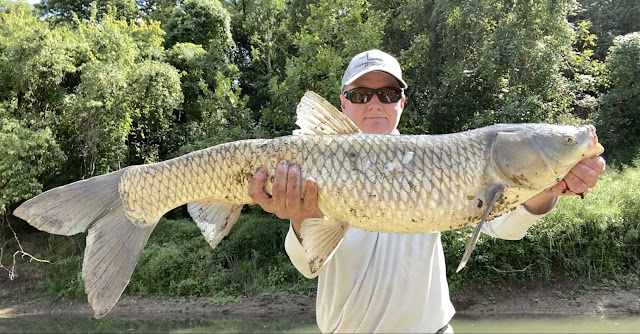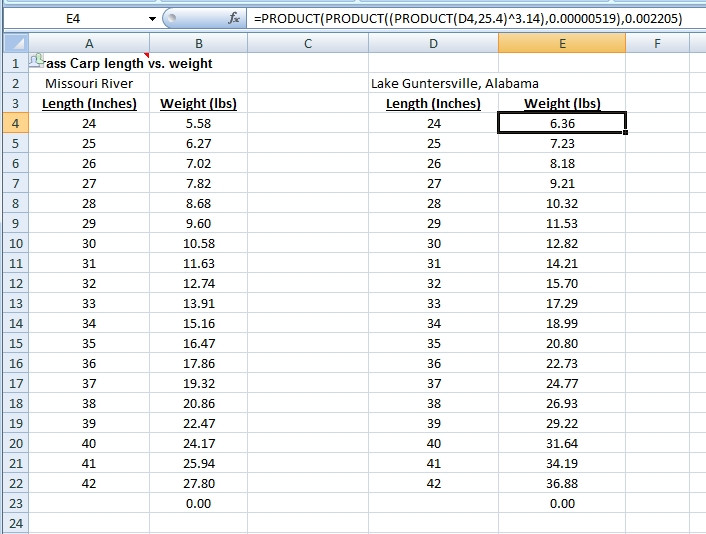***I haven't shared much regarding techniques for quit a while, my recent posts being more about the fish with which I am so enamored. I'm going to start sharing more specifically what I've learned for the various species I've caught.
We all know fish in different waters can behave differently and have different preferences. But I think overall this will give folks who want to try for certain species more info that can hopefully get them started off on the right foot, rather than going blindly. We can all shorten our personal learning curve by first learning from the experience of others.***
This blog post is about Grass Carp.
 |
| Grass Carp on Fly |
I feel it helps immensely if the water is clear enough for sight-fishing....where you can present the fly to an individual fish or spot, and see how they react. But I've caught them in muddier waters, especially if I know they SHOULD be around. I find them in and just below rapids, as well as near deeper pools. Often they will be along shore feeding, but ESPECIALLY under overhanging trees. That's where they will wait for food to drop into the water. When mulberries are ripe, if you can find trees next to the water dropping fruit in, Grass Carp love that, as do Common Carp and even catfish.
I've caught some on topwater flies, but I've caught most on subsurface flies such as small woolly buggers and nymphs. But BY FAR the most consistent technique I've tried is to use a 1/64th oz microjig with a #8 or #6 hook (I prefer Waspi Super Jig Heads, because they have a strong hook), tied with greenish Chartreuse chenille bodies with chartreuse marabou tails. And I change depth as needed, but often fish these about 20" below a Fish Pimp brand Original size strike indicator. The combination of the jig and the indicator hitting the water, many of the Grass Carp want to see if something good to eat just landed in the water. I cast near, but not right on top of, visible Grassies, if possible.
I've heard folks claim that Grass Carp don't fight. That has NOT been my experience at all. They will fight as hard as I do....meaning, if I try to horse them in, they fight harder. If I try to ease them in, the are more calm...until they get too close to shore! Then they freak again! So, in my experience, Grass Carp are very good fighters...you'll LOVE 'em! I've caught them on 5wt to 9wt rods. In fact, my biggest one yet was on a 5wt. That lighter rod probably helped protect my bad tippet. I've had my butt handed to me using a 6wt... where I was putting as much pressure as I thought I could on the fish without potentially breaking my tippet, but the fish eventually just sort of quite fighting and sat in one spot in the current. Humiliating! I kept at it and DID eventually land that fish. And it happened again where I felt totally undergunned, so I feel a 7wt or even an 8wt is probably the best wt rod for these Grass Carp. I use a weight forward floating line, and tippet should be 12 lb Fluorocarbon. You can go lighter if the fish seem to be leader shy. Sometimes they are, sometimes they aren't. I VERY MUCH recommend using a landing net for Grass Carp, it can shorten a battle considerably.
Its not often a fly angler can pursue fish that frequently exceed 10 lbs (28"-30", as seen in the table below), and I feel learning how to fight and land big fish is a very useful skill when pursuing these and other bigger gamefish. Practice it! :)
































No comments:
Post a Comment